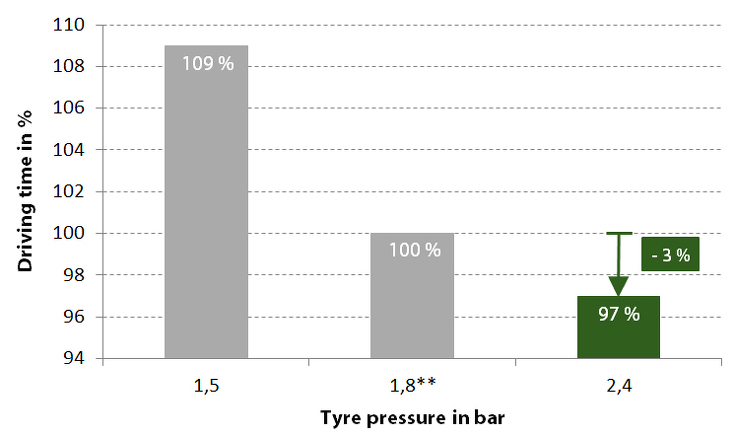The integrated tyre pressure regulation system VarioGrip very quickly adapts the tyre pressure from 0.6 to 2.5 bar – even while driving. This happens on all four wheels with the integral radial rotary feed-through, which is designed to last the lifetime of the tractor. Air is supplied via a water-cooled double-compressor as well as the vehicle's own valve equipment.
VarioGrip is available for flange and bar axles, and lets you adjust the tyre pressure at the touch of a button, even with dual tyres.














